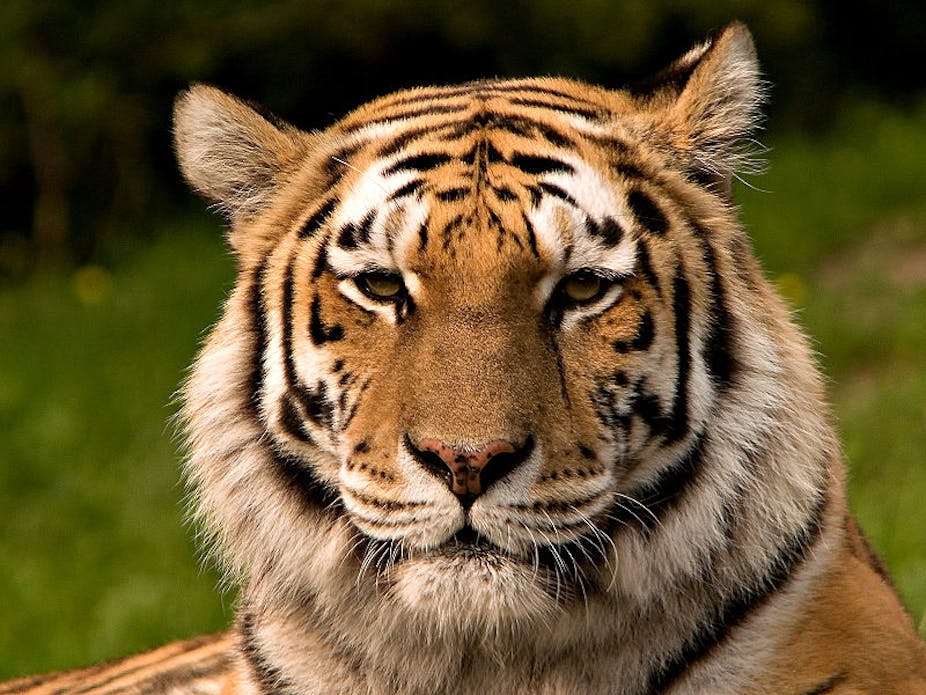On the face of it the British royal family’s commitment to wildlife conservation is unmistakable.
Perhaps the most well-known work is that of Prince Charles, who in May co-hosted a meeting on illegal wildlife trade, just one of many of his endeavours that include high level activities on rainforests and considerable work in Britain.
Both his father Prince Philip, who co-founded the WWF, and his son Prince William (now the Duke of Cambridge), are actively involved in global conservation. Indeed Prince William recently retired from his role as a RAF helicopter pilot to focus on his charity work, launching the United for Wildlife conservation alliance.
Less well known is that Princess Michael of Kent is a patron of the George Adamson Wildlife Preservation Trust, Mark Shand (the brother of Camilla Parker-Bowles, Prince Charles’ wife) set up the charity Elephant Family, and Prince Andrew has visited game reservation areas in Tanzania.
But their work is far more than just supporting and establishing charitable activities. What the royal family has done historically and continues to do for conservation in Britain is to drive a particular vision of what conservation should be, an influence that continues to this day.
We need to be careful. Any conservation vision is also inherently a social vision. Any battle for wildlife is a battle fought between people, which means people as well as animals will be among the casualties. The royal family is no stranger to these dilemmas and has found itself embroiled in controversy in the past. For example, when a WWF helicopter donated by Prince Philip was used in a shoot-to-kill anti-poaching operation in Sapi safari area in Zimbabwe in the 1980s. The helicopter was quickly withdrawn, but left a PR disaster for the WWF and its royal benefactors.
This is one of the problems of conservation visions, particularly in those overseas issues with which the royal family is associated. On the one hand, it can gloss over the power relations and responsibilities entailed when Britons take an interest in overseas conservation.
For example, as patron of the Tusk Trust Prince William said last year, “Africa’s natural heritage is the world’s natural heritage. We have to preserve places like this… not just for us, but for future generations.” Preserving African landscapes for “us” essentially meant wealthy Britons, for they were the audience. But whose lands are they? If they are part of the world’s heritage, then who in the world gave the Prince William the responsibility to lead conservation efforts? This is the sort of thinking which raises hackles and leads to phrases like “new imperialism”.
On the other hand it can promote particular ideas of what Africa should look like, and where wilderness should be, that obscures the complex, messy politics behind the practicalities of conservation.

Work with wildlife charities is a mark of respectability, like working with children’s charities or supporting a hospital. It seems apolitical and is unlikely to ruffle any government feathers. Who could argue with wanting to save the elephants or tigers? Well, the national park in Tanzania that Princess Michael of Kent’s charity supports was cleared of several thousand residents by an illegally conducted eviction – but you would be hard put to find details of that from the organisation involved. And the reserve that Prince Andrew visited (a hunting preserve) has since been at the centre of an only recently resolved dispute over evicting thousands more pastoralists.
Let us not forget the royal family is privileged. It moves in privileged circles - indeed, it sits among the pinnacle of the global elite. And ever since William the Conqueror set aside one third of England as personal hunting preserves, conservation has been deeply implicated in the defence of privilege. While the British monarchy and others have been central to the spread of conservation, it is based on elite privilege, exclusion, dispossession and separation of humans from their environment.
Our point here is not that the elite’s interactions with nature are somehow unsavoury, even though it may involve a certain amount of hunting. But while the British public were upset that Prince Philip shot a tiger shortly after founding the WWF, and while the Spanish public were furious that their king went hunting elephants as they struggled with economic woes, there was very little adverse impact to wildlife (besides the trophy victims).
The point is rather that royalty more often draws attention, bringing a certain amount of glamour and excitement to particular experiences of nature. In the 1920s, the East African safaris of the future kings Edward VIII and George VI helped mould the expectations of what such trips should be like. Royal support causes Britons to notice and listen, and many will do so less critically than they might otherwise.
Fortunately, our royal family is, at its core, public-spirited. By this we mean that one of its goals is undoubtedly a society which is more alive to conservation issues. And this ultimately will entail moving away from elitist, white, wealthy people that engage in external interventions in countries and communities far distant from their headquarters. It means a move to more local and grassroots conservation organisations instead, and a recognition that this a fight to shape and determine the terms of the debate, a war of position as the Italian intellectual Gramsci would put it, as much as a battle.
Following the launch of Prince William’s new conservation charity United for Wildlife, BBC Nature examines which animals already receive a degree of royal protection

